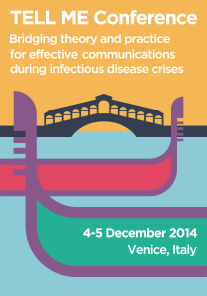The British way to fight Ebola
What has UK been doing to face the Ebola threat both within its borders and in West Africa? These are the two questions addressed by Brian McCloskey, Director of Global Health, during the meeting of the External Advisory Board (EAB) held on the 22nd September in London. The British Medical Journal Publishing Group hosted the meeting, while Zadig led the scientific and organizational aspects of this meeting with the support of University of Haifa as the scientific coordinator of the project.
McCloskey was invited to give a talk as the leader of the UK/Public Health England effort on Ebola in Sierra Leone. At first, he provided a brief update on the current situation in West Africa, highlighting that, according to available epidemiological data, at present time the epidemic is doubling every 21 days, which coincidentally is also the incubation period for the Ebola virus. With such a growing rate, about 550,000 cases are estimated by January 2015. Numbers that evoke a highly concerning scenario, for this would represent the largest Ebola virus outbreak ever recorded.
A threat that requires an effective preparedness plan. McCloskey noted that the UK has never had an Ebola case recorded in the past. However, national public health authorities have already taken all necessary measures to be ready for such an incident. The alarming tone used by the media and the magnitude of the epidemic in West Africa draw a lot of attention on Ebola. Also, the British investments in West Africa represent a source of economic and political pressure that links to the response.
The UK preparedness plans is focused on two main areas. The first one is centred around hospitals and the possibility to have specialised wards for taking care of patients with haemorrhagic fever. London has one hospital with two high level isolation units designated for this purpose. The second area is that of borders control: the main aim here is to present agencies and airport staff with information and clear instructions about monitoring and control of incoming travellers. Although some instructions will be in essence quite similar to those given during the 2009 influenza pandemic, it will be necessary to repeat training and information since it is very easy for people to lose their perspective in the event of an outbreak, thus forgetting even the implementation of standard procedures.
McCloskey also reported a relevant issue regarding risk communication: what about putting up posters and leaflets in the airports? In the end, this proposition was rejected on the basis that such a strategy would have had an impact on airline carriers since a number of people would be afraid to fly as a result. Moreover the information could be misleading for passengers arriving from West Africa as the symptoms could be similar to some other infectious disease.
As for actions to be taken in the hit country, McCloskey reported that UK has declared that a large number of fully equipped bed-units will be built within the next weeks for healthcare workers who get infected by the virus. Since the start of the epidemic, healthcare workers and medical personnel represent about a 10 percent of the total cases. The disease incidence amongst them is a serious issue because they have to be transported back to their countries for treatment. Most of all, it is becoming more and more difficult to find replacements since incentives are not enough for professionals to volunteer and work with patients in the affected areas. Thus, the British decision to create several bed-units – 70 at the beginning, but the progress of the epidemic made this number rise to one thousand – represents a clear message that authorities wanted to send: healthcare workers will be guaranteed to receive the best possible treatment as anywhere in the world. Thus, their decision to get to the infected areas should not be affected by a negative perception on medical infrastructure.


